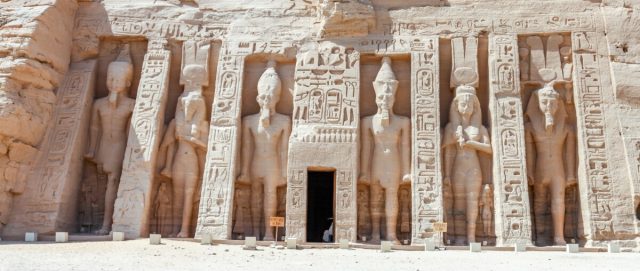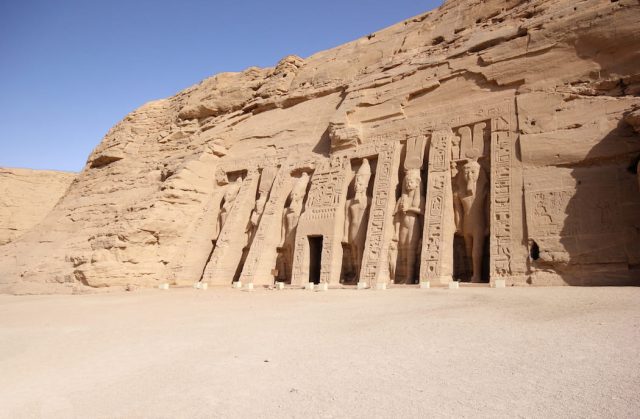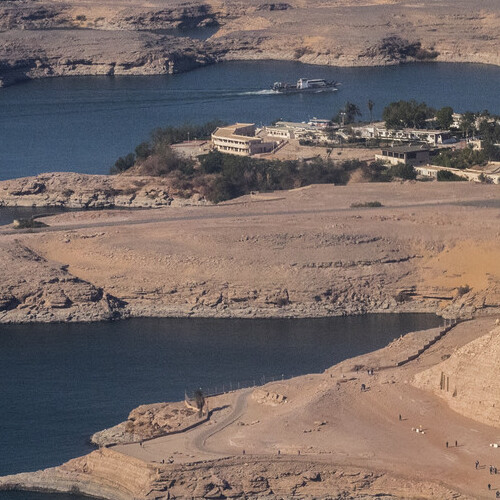Temple of Hathor at Abu Simbel
The Temple of Hathor: A Tribute to Queen Nefertari and Hathor
In the shadow of the Great Temple of Ramses II at Abu Simbel lies the smaller yet equally captivating Temple of Hathor, dedicated to the goddess Hathor and Queen Nefertari.

The Temple's Distinctive Entrance
- Statuary Arrangement: The entrance is adorned with statues of Ramses II and, notably, Queen Nefertari. It’s unique for a Pharaonic temple to feature statues of the queen at the same size as the king, indicating Ramses’s profound affection for Nefertari.
- Royal Family Depictions: Flanking these statues are smaller figures of their princes and princesses, reinforcing the familial aspect of this sacred space.
Interior Design and Symbolism
- Simpler Yet Significant: While less ornate than the Great Temple, the interior walls of the Temple of Hathor depict Nefertari and Ramses engaging in religious rituals, honoring Hathor and Mut.
- Deification of Nefertari: Echoing the celestial depiction of Ramses in the Great Temple, Nefertari is also portrayed in a divine light, reinforcing her esteemed status.
- Warrior Imagery: Carvings of Ramses as a warrior adorn the walls, showcasing his prowess and victories.
- Pillar Design: Unlike the Great Temple, the hall here features three rows of two pillars each, adorned with Hathor heads, adding to the temple’s distinctive aesthetic.

The Inner Sanctum and Surrounding Features
- Hathor’s Representation: A prominent carving of Hathor, depicted as a sacred cow-goddess, emerges from the Western Mountain, symbolizing rebirth and nurturing.
- Antechamber Imagery: Surrounding the antechamber are vivid depictions of Hathor in her sacred boat, with side chambers resembling caves, carved directly from the rock.
Additional Monuments in the Vicinity
- Historical Inscriptions: Below the temple cliffs, stones with inscribed names of Nubian officials provide a glimpse into the administrative aspects of the era.
- Sun-Court Relics: Near the Great Temple’s northern edge, remnants of a sun-court are visible.
- The Marriage Stele: This significant stele records the marriage contract between Ramses II and a Hittite princess, marking a pivotal diplomatic and personal event in Ramses’s reign.
The Temple of Hathor at Abu Simbel, while smaller than its neighboring Great Temple, stands as a unique and profound testament to both the divine reverence accorded to Nefertari and the rich religious symbolism of the ancient Egyptian pantheon.
Again, just like Ramesses was depicted as a celestial king within the great temple, Nefertari is also depicted as a deified queen inside the temple of Hathor.
Created On March 18, 2020
Updated On January 24, 2024
Abu Simble Travel Guide



